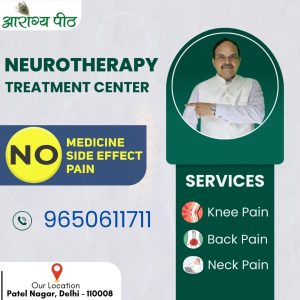Back pain is a common ailment that affects millions of people worldwide. It can range from a mild discomfort to debilitating pain, impacting daily activities and overall quality of life. In this article, we will explore the causes, symptoms, and treatment options for back pain.
Causes of Back Pain
Back pain can be caused by a variety of factors, including:
- Muscle strains and sprains: Overexertion, lifting heavy objects, or sudden movements can cause muscle strains or sprains in the back, leading to pain and discomfort.
- Poor posture: Sitting or standing for prolonged periods in a slouched or improper posture can put strain on the muscles and ligaments of the back, leading to pain.
- Spinal abnormalities: Conditions such as herniated discs, spinal stenosis, or scoliosis can put pressure on the nerves in the spine, resulting in back pain.
- Injuries: Traumatic incidents, such as falls, car accidents, or sports injuries, can cause damage to the structures of the back, leading to pain and discomfort.
- Medical conditions: Certain medical conditions like arthritis, osteoporosis, or fibromyalgia can contribute to chronic back pain.
Symptoms of Back Pain
The symptoms experienced with back pain can vary depending on the underlying cause. Common symptoms include:
- Dull, aching pain: This is the most common type of back pain and is often felt in the lower back. The pain may radiate to the buttocks and legs in some cases.
- Muscle stiffness: Back pain can be accompanied by muscle stiffness or difficulty in moving or bending.
- Sharp, shooting pain: Nerve-related back pain can cause sharp, shooting pain that travels down the leg, often known as sciatica.
- Limited range of motion: Back pain can make it challenging to perform certain movements and activities.
Treatment Options for Back Pain
The treatment of back pain depends on the severity and underlying cause. Here are some common treatment options:
- Rest and self-care: For mild back pain, resting, applying ice or heat packs, and over-the-counter pain medications can provide relief.
- Physical therapy: Gentle exercises, stretches, and strengthening exercises can help alleviate back pain and prevent future episodes.
- Medications: Depending on the type and severity of the pain, a doctor may prescribe pain relievers, muscle relaxants, or anti-inflammatory medications.
- Injections: In some cases, corticosteroid injections may be recommended to reduce inflammation and provide relief.
- Surgery: If conservative treatments fail to relieve the pain, surgery may be considered for certain conditions such as herniated discs or spinal abnormalities.
Preventing Back Pain
While it’s not always possible to prevent back pain, adopting healthy habits can help reduce the risk:
- Maintain good posture while sitting, standing, and lifting heavy objects.
- Engage in regular exercise to strengthen the back muscles and improve flexibility.
- Use proper lifting techniques and avoid excessive strain on the back.
- Take regular breaks from prolonged sitting or standing to stretch and move around.
It’s important to consult with a healthcare professional for an accurate diagnosis and personalized treatment plan if you are experiencing persistent or severe back pain. Remember, early intervention and proper management can often lead to effective pain relief and improved quality of life.
Note: This article is for informational purposes only and should not replace professional medical advice. If you have specific concerns or questions regarding your back pain, please consult with a healthcare professional.






